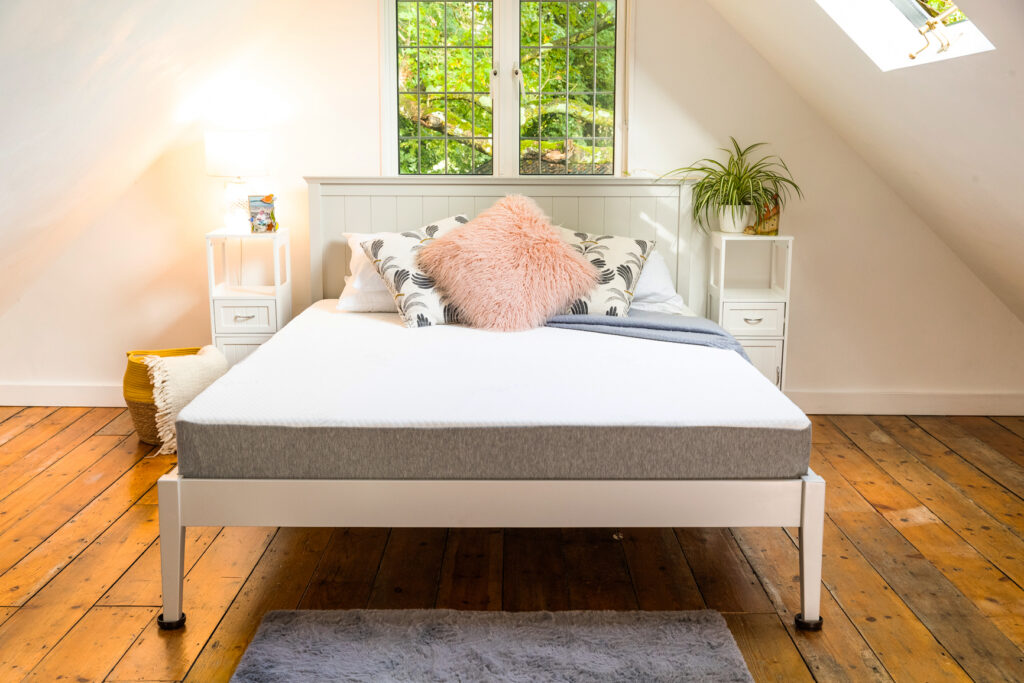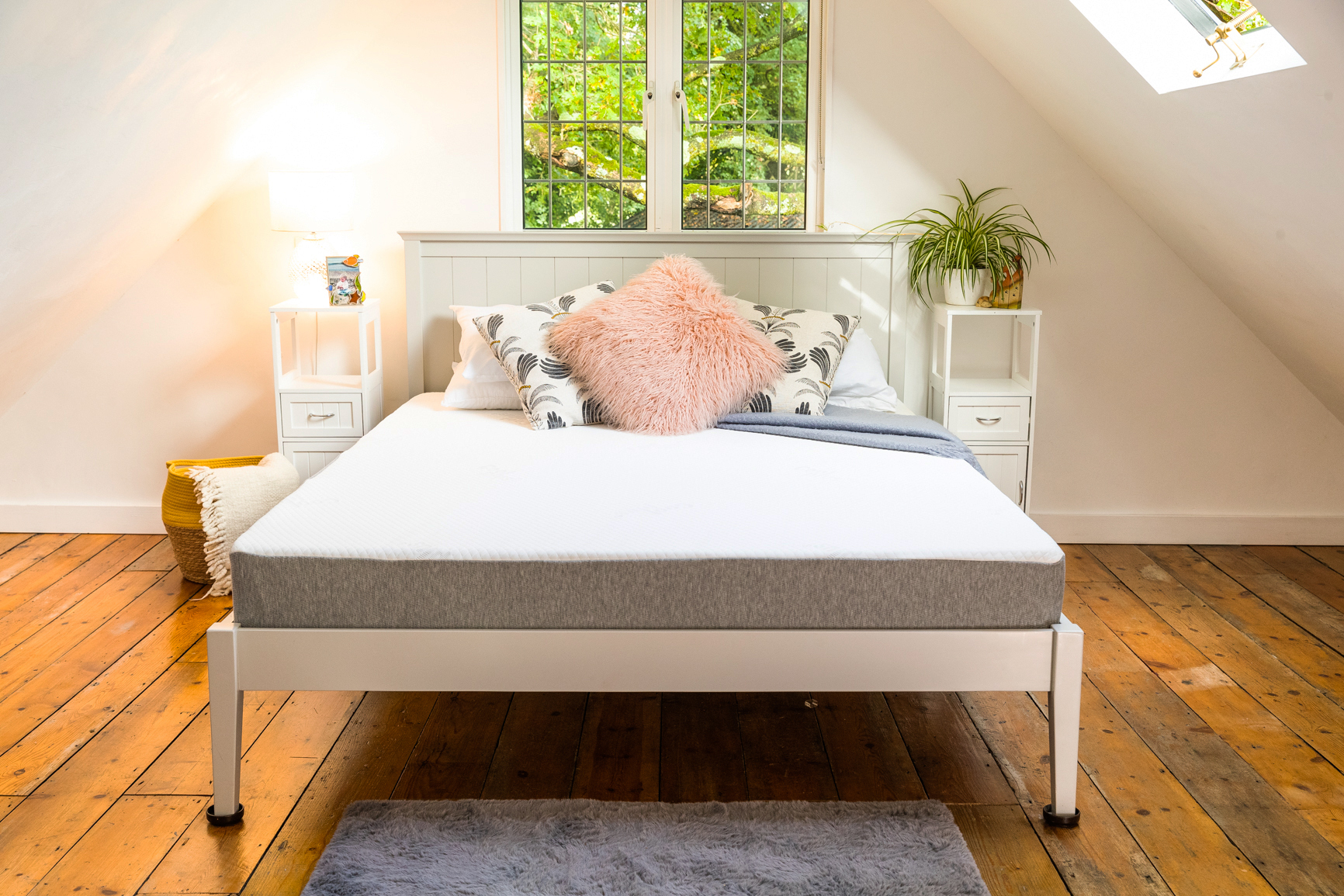
When is the right time to buy a new mattress?
If your mattress isn’t showing signs of wear and tear, you might think there’s no need to replace it. However, even if it seems in good condition, manufacturers recommend that you change it every six to eight years.
And different types of mattresses have different shelf lives ones made from natural materials such as latex, can last much longer. It can also depend on how well you look after your mattress as this can extend its life even further.
When should the different types of mattresses be changed?
How often a particular type of mattress needs to be changed depends on the quality of materials used to make it and how well it’s cared for. To give you an idea of when yours is due for renewal, read about some of the most common types of mattresses and given their typical life spans below.
Hybrid mattresses
A combination of innerspring and foam mattresses, hybrids are usually made up of a base layer of foam, coils in the middle, and another layer of foam on top. This type of mattress will usually need to be replaced every five to ten years.
Innerspring and pocket coil mattresses
Due to their coil support systems, innerspring and pocket coil mattresses distribute body weight evenly, making them ideal for all manner of sleeping positions. This of mattress will last approximately five to seven years, but it can last more than ten if it’s two-sided, as it can be turned over to help distribute wear and tear more evenly.
Memory foam mattresses
Memory foam mattresses are made from a foam material that moulds to the contours of the body. A memory foam mattress typically lasts for ten years, although it can last up to 15 if it’s looked after properly.
Latex Mattresses
Latex mattresses are a combination of latex foam and either springs or reflex foam. The result is a supportive and long mattress. However, the extent of its durability depends on whether the latex is natural or synthetic. A synthetic latex mattress can last between five and ten years, whilst a natural latex mattress doesn’t usually need to be replaced for 15 to 25 years.
Factors that can affect the lifespan of your mattress
The lifespan of your mattress can be influenced by several factors, including:
- Sharing your bed with pets and children can put extra strain on your mattress and reduce its lifespan.
- The better you care for your mattress, the longer it is likely to last.
- The durability of your mattress will differ depending on the materials that have been used to make it.
- Most mattresses are designed to support the weight of the average human body. Therefore, if a mattress is supporting a heavier body, it will probably begin to sag sooner.
How can you make your mattress last longer?
Taking good care of your mattress will prolong its lifespan. If you’ve recently bought a new mattress, here are some tips to ensure it stays in pristine condition for longer.
Turn your mattress
If your mattress is two-sided, turn it over every six months to evenly distribute wear and tear which will increase its chances of staying comfortable for longer. But not all mattresses need to be turned. Some have a sturdy bottom layer with a softer top such as a Tempur® mattress, so be sure to check before you turn it over.
Clean and air your mattress regularly
Clean your mattress according to the manufacturer’s instructions, which include vacuuming to get rid of dust mites and dead skin cells every couple of months. For a deeper clean, sprinkle some bicarbonate of soda on the top of the mattress to soak up moisture and odours, and then vacuum it up after a couple of hours.
To air your mattress take off the bedding and open your bedroom windows to provide good ventilation. This is especially beneficial on a sunny day as it will reduce the build-up of dust and moisture and the UV rays of direct sunlight can kill the bacteria.
Prevent it from being damaged
If your mattress is made with springs, keep it upright when you’re moving it about so you don’t damage them. Children jumping up and down on the bed can also damage coils, so prevent them from doing this. Also make sure that your bed base is supportive enough for the type of mattress you have. Lastly, keep pets off the bed as damage can be caused by claws or teeth.
Protect your mattress
A mattress protector is a great way to protect your mattress from spills, sweat and dust. They can be machine washed and are inexpensive to buy. If you can afford to spend a little more, consider a mattress topper, which does the same job as a protector but adds an extra layer of comfort.
Rotate your mattress
Although only certain mattresses can be turned over, most can be rotated, so consider doing this every three to six months. Again, wear and tear will be distributed more evenly and lumps and bumps will level out. But do bear in mind that if your mattress has specific areas that support different body parts, you won’t be able to rotate it.
How can you tell when you need a new mattress?
If your mattress is showing signs of wear and tear, such as yellowing in colour, sagging or lumps or coils that can be felt through the fabric that’s when you’ll know it needs replacing. There are also some other signs that could indicate it’s time to get a new mattress. Some of these include:
• Waking up more often during the night or choosing to sleep in the spare bed due to discomfort
• Stiff or achy muscles or joints when you wake up
• Increased back pain
• Squeaky springs
• Worsening allergies or asthma due to a build-up of dust mites and bacteria
• You are more aware of your partner moving, indicating that your mattress has lost its motion transfer reduction capabilities
• You have a better night’s sleep in another bed
• You’ve gained weight which can make an older mattress less comfortable.
What are the benefits of replacing your mattress?
Replacing your mattress has many benefits, including:
• Better sleep quality. Getting a good night’s sleep is important for your health and it can also improve mood and productivity
• Fewer aches and pains as an old mattress that has lost its supportive qualities in the middle puts increased pressure on your spine, causing shoulder, neck, and hip stiffness, as well as back pain
• Fewer allergic reactions as newer mattresses contain fewer dust mites and other allergens
• Less motion transfer as a new mattress can reduce motion transfer so that when your partner moves, you won’t be woken up.
Having a decent mattress is essential for your physical and mental wellbeing. If your bed is comfortable and your body weight is supported properly, you’ll get a better night’s sleep, which can help with a wide range of physical and mental disorders. By keeping an eye on your mattress for wear and tear, and by cleaning and protecting your mattress, you can prolong its lifespan.

